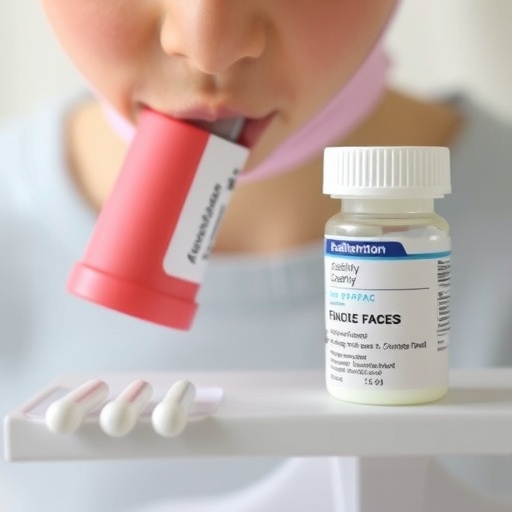Therapeutic implications for infants treated for congenital heart disease
CLEVELAND — Researchers from the Department of Pediatrics at Case Western Reserve University School of Medicine and University Hospitals Rainbow Babies and Children’s Hospital presented results of a study that investigated whether there are any deleterious effects of prostaglandin E1 (PGE1) treatment on breathing and whether these effects would be prevented via pre-treatment with caffeine.
PGE1 is a life-saving medication for infants with certain types of congenital heart disease, but can also cause respiratory complications such as apnea, which if severe enough may necessitate intubation. The study used an animal model to test whether pre-treatment with caffeine could prevent the PGE1-induced respiratory complications. Caffeine is commonly used in the neonatal intensive care unit to treat apnea of prematurity, and the lead authors (Lisa Mitchell, DO, and Peter M. MacFarlane, PhD) proposed that caffeine could also have similar benefits in infants treated for congenital heart disease.
The study, called “Caffeine prevents prostaglandin E1-induced disturbances in respiratory neural control: therapeutic implications for infants treated for congenital heart disease,” was presented as a platform discussion at the 2019 Pediatric Academic Societies Meeting in Baltimore.
Following a single injection of PGE1, whole-body plethysmography was used in baby rats to assess their ability to increase breathing (called the hypoxic ventilatory response, HVR) in response to an acute hypoxia challenge. In subsets of animals, rats received a subcutaneous injection of caffeine (5mg/kg, which has been shown to be an antagonist of adenosine receptors in the brain) one hour prior to PGE1. Brainstem regions containing respiratory control centers were removed and tested via RT-PCR for markers of inflammation (TNFα, IL-1β, IL-6, and iNOS) and microglia (Iba-1).
Two hours after PGE1 injection, the rats exhibited a significant alteration in the HVR, a finding suggestive of unstable breathing possibly via an undesirable disruption of CNS respiratory neural control regions. Further supportive evidence of a CNS effect of PGE1 on breathing was the finding that PGE1 also decreased brainstem Iba-1 (a marker of microglia) mRNA expression. Microglia are the resident immune cells of the CNS and have previously been shown to modulate breathing, but this study is the first to show that they may play a role in mediating the respiratory disturbances associated with PGE1. Perhaps the most surprising finding was that pretreatment with caffeine prevented all the adverse effects of PGE1 on both breathing and Iba-1 expression. A more selective adenosine 2A receptor antagonist (MSX-3) had a similar beneficial effect.
Their conclusions: “We propose that PGE exerts adenosine-mediated effects on brainstem mechanisms of respiratory control, which may lead to destabilization of breathing in human infants undergoing treatment for congenital heart disease. Prostaglandin’s effects could be mediated thorough microglia, and caffeine could be a convenient treatment to prevent respiratory instability in infants receiving PGE1 infusion.”
###
The researchers are Lisa Mitchell, DO, Thomas Raffay, MD, Cathy Mayer, MS, Aubrey Mayer, Julie M. Di Fiore, MS, Steven L. Shein, MD, and Peter M. MacFarlane, PhD, from the Department of Pediatrics, Case Western Reserve University and UH Rainbow Babies and Children’s Hospital. The study was funded by the Rainbow Babies & Children’s Foundation.
About Case Western Reserve University School of Medicine
For more information about Case Western Reserve University School of Medicine, please visit: case.edu/medicine.
About UH Rainbow Babies & Children’s
UH Rainbow Babies & Children’s offers the most expansive pediatric care network in Northeast Ohio, with more than 740,000 annual patient encounters at 131 service locations. The vast network includes nationally-ranked UH Rainbow Babies & Children’s Hospital — Cleveland’s only full-service, freestanding children’s hospital with a medical staff of more than 745 physicians and Northern Ohio’s only Level I Pediatric Trauma Center – along with a primary care network of more than 200 pediatric and family medicine providers at 83 offices, inpatient care, pediatric emergency services, urgent care centers, surgery centers, medical and surgical specialty clinics, and advanced newborn and maternal/fetal medicine services. Learn more at Rainbow.org.
About University Hospitals / Cleveland, Ohio
Founded in 1866, University Hospitals serves the needs of patients through an integrated network of 18 hospitals, more than 50 health centers and outpatient facilities, and 200 physician offices in 16 counties throughout northern Ohio. The system’s flagship academic medical center, University Hospitals Cleveland Medical Center, located in Cleveland’s University Circle, is affiliated with Case Western Reserve University School of Medicine. The main campus also includes University Hospitals Rainbow Babies & Children’s Hospital, ranked among the top children’s hospitals in the nation; University Hospitals MacDonald Women’s Hospital, Ohio’s only hospital for women; University Hospitals Harrington Heart & Vascular Institute, a high-volume national referral center for complex cardiovascular procedures; and University Hospitals Seidman Cancer Center, part of the NCI-designated Case Comprehensive Cancer Center. UH is home to some of the most prestigious clinical and research programs in the nation, including cancer, pediatrics, women’s health, orthopedics, radiology, neuroscience, cardiology and cardiovascular surgery, digestive health, transplantation and urology. UH Cleveland Medical Center is perennially among the highest performers in national ranking surveys, including “America’s Best Hospitals” from U.S. News & World Report. UH is also home to Harrington Discovery Institute at University Hospitals – part of The Harrington Project for Discovery & Development. UH is one of the largest employers in Northeast Ohio with 28,000 physicians and employees.
Advancing the Science of Health and the Art of Compassion is UH’s vision for benefitting its patients into the future, and the organization’s unwavering mission is To Heal. To Teach. To Discover. Follow UH on Facebook @UniversityHospitals and Twitter @UHhospitals. For more information, visit UHhospitals.org
Media Contact
George Stamatis
[email protected]




